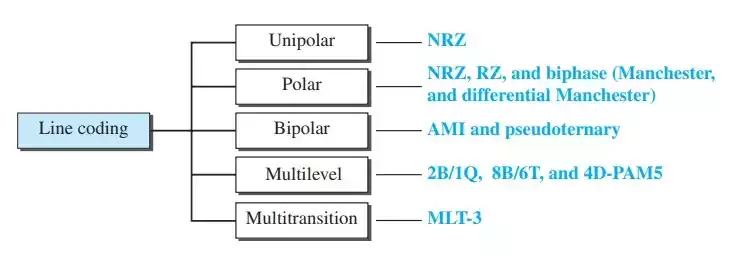What is Network Congestion in Computer Networks? And How to Avoid Them
Network congestion is a prevalent issue in modern computer networks. It arises when excessive data traffic overwhelms network capacity, resulting in performance slowdowns and delays.
This article aims to explore the concept of network congestion, its detrimental effects, and provide practical strategies to reduce and avoid congestion in computer networks.
Table of Contents
What is Network Congestion in Computer Networks?
Network congestion refers to a state in which a computer network experiences an overwhelming volume of traffic, exceeding its capacity to handle the incoming data effectively.
When network congestion arises, data packets may encounter delays or even be dropped, resulting in compromised network performance and increased latency.
This can significantly impact user experience, leading to slower data transfer speeds, disrupted connections, and diminished network efficiency.
Causes of Network Congestion
Network congestion can stem from various factors, including:
1. Increased Network Traffic
As the number of users and connected devices within a network grows, the volume of network traffic escalates.
This surge in traffic can strain the network’s resources, leading to congestion.
2. Bandwidth Limitations
Networks have finite bandwidth capacities, which define the amount of data that can be transmitted within a given time frame.
When the demand for bandwidth surpasses its maximum capacity, congestion occurs.
3. Insufficient Network Infrastructure
Inadequate network infrastructure, outdated equipment, or equipment malfunctions can contribute to congestion.
Faulty switches, routers, or cables can prevent the smooth flow of data, leading to congestion points within the network.
4. Network Topology
The network’s physical or logical layout, known as the network topology, can impact congestion.
In networks with a centralized design, where all data traffic flows through a single point, congestion is more likely to occur compared to distributed or mesh network topologies.
5. Malicious Activities or Security Breaches
Cyberattacks, such as Distributed Denial of Service (DDoS) attacks, can overwhelm a network by flooding it with an excessive amount of traffic.
These malicious activities can lead to congestion and disrupt network operations.
Effects of Network Congestion
The consequences of network congestion can have far-reaching implications:
1. Increased Latency
Network congestion causes delays in data transmission, resulting in higher latency. Latency refers to the time it takes for data to travel from its source to its destination.
Higher latency can hinder real-time applications such as video conferencing or online gaming, where responsiveness is critical.
2. Packet Loss
Congestion can lead to packet loss, where data packets are dropped due to network overload.
Packet loss can trigger retransmissions, which further worsen congestion and degrade network performance.
3. Reduced Throughput
Network congestion restricts the network’s throughput, which refers to the amount of data that can be transmitted within a given time period.
Reduced throughput translates into slower download and upload speeds, hindering productivity and user experience.
4. Network Degradation
Congestion can cause the overall degradation of network performance. Applications that rely on the network, such as cloud services or data-intensive operations, may experience significant disruptions and become unusable during periods of congestion.
How to Avoid Network Congestion?
While network congestion can be a complex and persistent challenge, implementing the following strategies can help lessen and avoid congestion in computer networks:
1. Network Monitoring and Traffic Analysis
Regularly monitoring network traffic and analyzing usage patterns provide insights into potential congestion points and the overall health of the network.
Network monitoring tools and software can detect unusual spikes in traffic and identify potential bottlenecks before they cause significant congestion.
2. Bandwidth Management and Prioritization
Implementing Quality of Service (QoS) mechanisms enables the prioritization of critical applications and traffic types over less important ones.
By allocating appropriate bandwidth resources, network administrators can ensure that essential services receive the necessary bandwidth, minimizing congestion risks.
3. Network Capacity Planning and Scaling
Proactive network capacity planning involves forecasting future network demands and ensuring sufficient resources are in place to accommodate growing traffic.
Scaling network capacity, such as upgrading hardware or increasing bandwidth, helps prevent congestion by providing additional resources to handle the increasing demands.
4. Load Balancing
Load balancing distributes network traffic evenly across multiple network devices or paths, preventing congestion by avoiding the overload of a single network component.
Load balancing techniques, such as round-robin or least-connections, optimize network performance and reduce the risk of congestion.
5. Traffic Shaping and Policing
Traffic shaping and policing mechanisms enable network administrators to regulate and control the flow of network traffic.
By setting traffic policies, such as bandwidth limits and rate controls, excessive traffic can be decreased, reducing the likelihood of congestion.
6. Network Redundancy and Resilience
Introducing network redundancy and implementing fault-tolerant mechanisms can enhance network resilience and lessen the impact of congestion.
Redundant paths, alternate routes, and backup network equipment can help ensure uninterrupted connectivity during congestion or network failures.
Wrap Up
Network congestion poses significant challenges in computer networks, impacting performance, user experience, and productivity.
By understanding the causes and effects of congestion and implementing proactive measures to mitigate its occurrence, network administrators can ensure smooth and efficient network operations.
Regular network monitoring, capacity planning, traffic prioritization, and the use of congestion control mechanisms are essential components of congestion management.
By following these strategies, businesses, and individuals can avoid the adverse effects of network congestion and maintain a robust and reliable network infrastructure.
Frequently Asked Questions (FAQs)
- What are the common signs of network congestion? Network congestion often manifests through symptoms such as slow data transfer speeds, increased latency, frequent packet loss, and degraded network performance.
Users may experience difficulties accessing websites or applications, and real-time services like video streaming or online gaming may become choppy or unresponsive. - How does network congestion affect businesses? For businesses, network congestion can lead to reduced productivity, disrupted operations, and customer dissatisfaction.
Slower data transfer speeds and delayed communication can hinder collaboration, impact customer service, and impede critical business processes reliant on network connectivity. - Can network congestion be resolved by increasing bandwidth alone? While increasing bandwidth can alleviate congestion to some extent, it is not always the sole solution.
Bandwidth upgrades should be coupled with other congestion management techniques, such as traffic shaping, load balancing, and network optimization, to achieve optimal results. - Are there industry standards or protocols for reducing network congestion? Yes, several industry standards and protocols address network congestion and its management.
For instance, the Internet Engineering Task Force (IETF) has developed congestion control algorithms like TCP (Transmission Control Protocol) and AQM (Active Queue Management) mechanisms to mitigate congestion and ensure fair resource allocation. - Is network congestion only relevant for large-scale networks? Network congestion can affect networks of all sizes, from small local networks to large-scale enterprise or service provider networks.
As the volume of network traffic increases, even smaller networks can experience congestion if not appropriately managed. - Can network congestion be entirely eliminated? Complete elimination of network congestion is challenging, particularly in dynamic and ever-evolving network environments.
However, with effective congestion management strategies and regular network maintenance, the impact of congestion can be minimized, ensuring optimal network performance and user experience.





